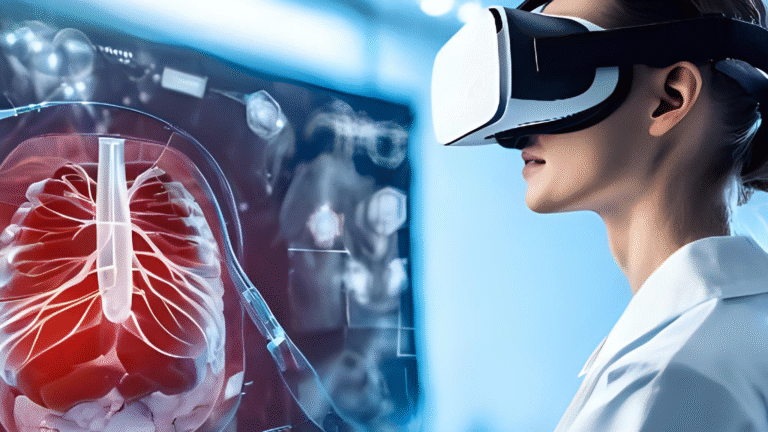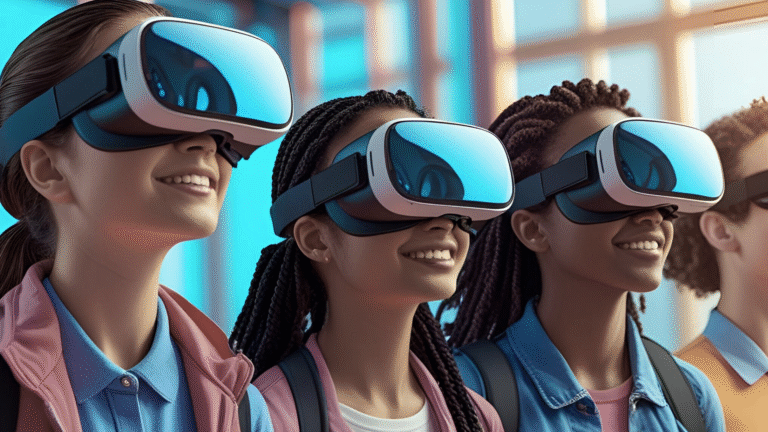Introduction
There’s no denying that medical education has always leaned on books, lectures, and live patient rounds. For years, these methods formed the backbone of training doctors and nurses. But as healthcare becomes more complex, relying solely on the old way isn’t enough anymore.
Not every student has equal access to live cases or clinical exposure. Some don’t see critical procedures until years into their training. Others may graduate having watched more than they’ve actually done. In a profession where small mistakes have serious consequences, this is a real problem.
Virtual reality is starting to change that. Instead of learning by observation alone, students now have the chance to step into a simulation where they perform, repeat, and learn from their own actions. But is this shift just exciting tech or is it actually a better way to learn?

Why Traditional Methods Are Showing Their Limits?
Classroom instruction has its place. It builds knowledge and teaches theory. But the gap between understanding something on paper and applying it during surgery or emergency care can be huge.
Students in medical colleges often learn under pressure. A brief chance in a crowded ward. A few minutes during a live operation. Mistakes can’t be made freely. There’s rarely time to reflect or retry. And for many, the confidence to perform builds slowly, sometimes too slowly.
It’s not the fault of the teachers. It’s the nature of the system. And for a long time, there wasn’t a better alternative.
Why Traditional Methods Are Showing Their Limits?
Classroom instruction has its place. It builds knowledge and teaches theory. But the gap between understanding something on paper and applying it during surgery or emergency care can be huge.
Students in medical colleges often learn under pressure. A brief chance in a crowded ward. A few minutes during a live operation. Mistakes can’t be made freely. There’s rarely time to reflect or retry. And for many, the confidence to perform builds slowly, sometimes too slowly.
It’s not the fault of the teachers. It’s the nature of the system. And for a long time, there wasn’t a better alternative.
What VR Really Offers to Medical Learners?
Virtual reality changes the experience entirely. It creates a world where students can practice procedures like they would in real life. They use their hands. They move through clinical spaces. They deal with patient scenarios as they unfold.
A medical student can now perform the same surgery ten times before entering a real operating room. A nurse can learn how to respond to critical care situations with calm, because she has practiced it already, in a virtual environment that feels close to real.
These simulations don’t replace teachers. Instead, they allow learners to bring their textbook knowledge into action without risking lives or waiting for rare case opportunities.
Why Students Learn Better in Virtual Simulations?
The key difference with virtual reality is how deeply it involves the learner. Instead of watching someone else, students are making the decisions themselves. That level of involvement makes a huge impact.
When people interact with a situation, move through it, respond to it, make choices in it, they remember it better. They understand not just what to do, but why and how it works. That kind of understanding sticks far longer than something read on a slide.
It also builds calm under pressure. The first time you see a patient crash shouldn’t be during a real emergency. With VR, it doesn’t have to be.

How It's Being Used in Healthcare Right Now?
This is no longer a theory. Virtual reality is being used in medical training across many fields. Here are some real examples:
- Surgical trainees use VR to walk through procedures step by step, handling instruments and responding to simulated complications.
- Emergency care simulations allow doctors to practice critical interventions under time pressure.
- Anatomy lessons take place inside a 3D body, where students can zoom in on any organ or system in detail.
- Nursing students learn daily procedures like wound dressing, IV setup, and patient handling through repeatable practice.
- Some programs even use VR to teach bedside manner, allowing future clinicians to practice delivering tough news to virtual patients.
Each of these tools allows students to learn in a space where they can stop, start again, ask questions, and refine their technique, something not always possible in busy clinics.
What the Studies Are Showing?
Many institutions have started measuring how effective VR really is. The results are encouraging. In some trials, students trained through simulations scored higher on practical exams than those who followed traditional training alone.
Even more important is confidence. Students who go through virtual reality training report feeling more prepared when they encounter similar situations in real life. The ability to rehearse, get feedback, and go again creates a stronger foundation than passive observation ever could.
This doesn’t mean the textbook is obsolete, but it shows how much more powerful learning becomes when theory meets action.
Barriers That Still Need Work
Of course, no solution is perfect. Virtual reality comes with a few challenges.
For some institutions, especially in developing regions, the upfront cost of equipment can be a barrier. While prices are dropping, building quality simulations still requires an investment.
Some students experience fatigue or mild discomfort when using VR for long periods. These issues are being addressed with better hardware, but they still exist.
Educators also need time to adapt. Designing lessons for a virtual environment is not the same as preparing a PowerPoint. It requires planning and a shift in mindset.
But none of these are permanent problems. In fact, most are already being solved.
What the Next Few Years Will Likely Bring?
Looking ahead, the future of healthcare training is likely to mix VR with artificial intelligence. Lessons will adapt to each student’s performance. If you struggle in one area, the system will guide you with extra practice. If you perform well, it will move you to more complex scenarios.
This kind of personalized training wasn’t possible before. Now, it’s just around the corner.
The biggest opportunity lies in equal access. A student in a small city can now receive the same level of training as someone at a top-tier hospital. That kind of balance could change healthcare outcomes across entire regions.
ZATSIM’s Role in All of This
In Pakistan, ZATSIM is helping turn this shift into reality. The team builds custom training simulations for hospitals, medical schools, and clinics across the country. Each simulation is designed to reflect the real challenges these institutions face, whether that’s surgical prep, emergency drills, or general nursing skills.
These aren’t generic programs taken from abroad. They’re built from scratch with local needs in mind. That means students aren’t learning systems that don’t apply to them. They’re preparing for the very situations they’ll actually face.
ZATSIM works closely with instructors, administrators, and healthcare leaders to make sure the training doesn’t just look good, but that it works.
Conclusion
Virtual reality in healthcare is no longer a concept for the future. It’s here now, and it’s proving its worth.
It won’t replace good teaching. It won’t remove the need for real-world experience. But it adds something valuable, a safe space to practice, a way to repeat until it’s second nature, and a learning method that matches the demands of modern medicine.
Traditional education gave us the foundation. Virtual reality helps us build on it. And for students preparing to care for lives, that combination may be exactly what’s needed.
If your institution is looking to upgrade its training approach, VR may be the smartest step forward.
Interested in seeing how this could work for your team? ZATSIM offers demos and consultations for institutions ready to bring modern medical training to life.
